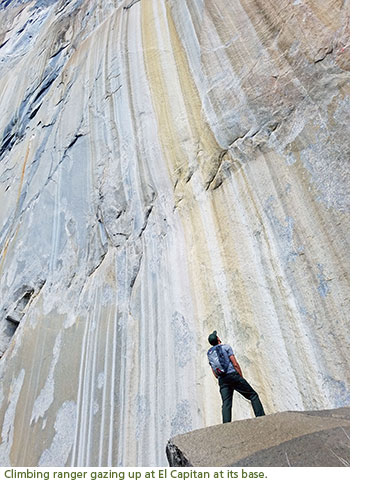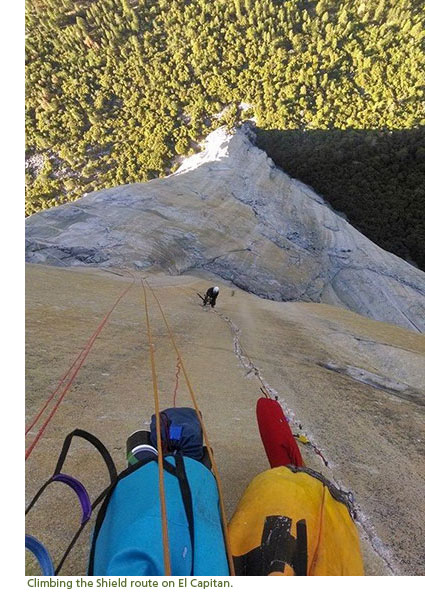 As a big wall climber and ranger in Yosemite National Park, I am often asked what it is like on the wall. My best analogy is that a big wall climb is like living within a dream. We have all had dreams where we are completely absorbed in another life, another time, another place. Within dreams, we are oftentimes entirely different people.
As a big wall climber and ranger in Yosemite National Park, I am often asked what it is like on the wall. My best analogy is that a big wall climb is like living within a dream. We have all had dreams where we are completely absorbed in another life, another time, another place. Within dreams, we are oftentimes entirely different people.
That is how I feel while immersed in a vertical adventure. Leaving the ground, the rest of the world fades away and I am morphed into a separate reality where the only thing that matters is the next move, the next placement, the systems of vertical progression. Efficiency and grace are prized while in a world damp in stress and exertion.
To wall climb is to fall into a dreamworld existence. I explore landscapes where mankind seemingly does not belong. I witness beauty rare in typical life. I navigate through geologic stories millions of years in the making, solidified in the soaring granite. I seek comfort and stability amidst total physical and mental commitment. Revelation drifts through my consciousness at these moments.
And then I top out. I awake into a world of trees and dirt. Walking feels weird, I have to re-adapt to the horizontal world. It takes time to reduce the grogginess of awakening from a dream. I remember moments from days prior while on the wall, and am sometimes unsure of distinctions between fact and fiction. I revel in having experienced an alternate reality, a birth and a death within a breath, an entire existence within a dream.
I’m certainly not the first Yosemite climber to regard climbing as a profound experience. Amidst great journeys, many have found an answer to the greatest of all climbing questions. Greg Child once wrote that “Somewhere between the bottom of the climb and the summit is the answer to the mystery of why we climb.” The answer lies within the journey itself, between each placement and motion, among the realizations that become all too apparent while travelling through dreams. For many, climbing produces such an impact on one’s life, that it becomes an integral part of their identity.
It is important to dream. The human mind has the ability, and therefore the need, to produce. It is a creative and imaginative tool and for us climbers, our medium is rock. Yosemite climbing legend Royal Robbins famously pioneered the idea of approaching climbs as art. Robbins saw Yosemite’s walls as battlefields where the souls and minds of climbers could achieve a higher state. He advocated for clean climbing and eschewed any unnecessary and rock-scarring pitons because “like a single word in a poem, it can affect the entire composition.” This approach to climbing still holds strong here in Yosemite.
I believe in the transformative effects of climbing, and treasure moments where I interact with the overwhelming power of this place. My travels through vertical dreams have in many ways come to define who I am as a person. My life is now a perpetual pursuit of the next experience. I will never stop dreaming.

